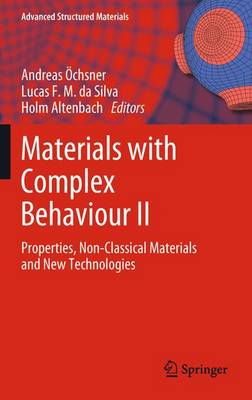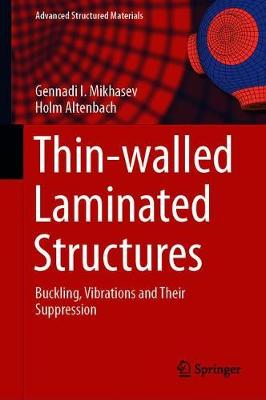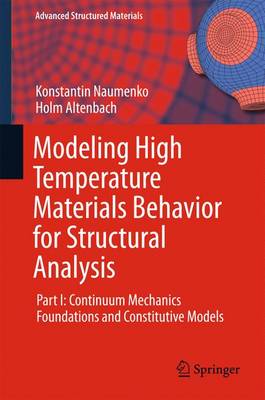Advanced Structured Materials
3 primary works • 4 total works
Book 16
Book 106
This book presents a theoretical approach that allows the analysis of structures with magnetorheological and electrorheological layers, and shows, with the help of examples, how the mechanical behaviour of thin-walled laminated structures can be influenced.
It consists of six chapters:
Chapter 1 presents a brief overview of derivation approaches for theories of thin-walled structures, modelling of composites and modelling of laminated and sandwich structures.
Chapter 2 describes the equivalent single layer model for thin laminated cylindrical shells, including the special cases of plates and beams. In addition to the classical mechanical properties, it also considers the electrorheological and magnetorheological properties.Chapter 3 presents the elastic buckling of laminated beams, plates, and cylindrical shells, discussing various problems, such as the influence of the boundary conditions, external loading and magnetic fields. It also suggests different approximations for asymptotic methods.
Chapter 4 focuses on the free vibrations of elastic laminated beams, plates and cylindrical shells, investigating the influence of the boundary conditions and other factors.
Chapter 5 presents the latest results concerning vibration of laminated structures composed of smart materials and discusses in detail the influence of electric and magnetic fields on smart structures. These results provide insights into the optimal design of these structures.Lastly, Chapter 6 features a short appendix presenting asymptotic estimates and series.
Book 112
Modeling High Temperature Materials Behavior for Structural Analysis
by Konstantin Naumenko and Holm Altenbach
This monograph presents
approaches to characterize inelastic behavior of materials and structures at
high temperature. Starting from experimental observations, it discusses basic
features of inelastic phenomena including creep, plasticity, relaxation, low
cycle and thermal fatigue.
The authors formulate constitutive equations to describe the inelastic response
for the given states of stress and microstructure. They introduce evolution
equations to capture hardening, recovery, softening, ageing and damage processes.
Principles of continuum mechanics and thermodynamics are presented to provide a
framework for the modeling materials behavior with the aim of structural
analysis of high-temperature engineering components.



